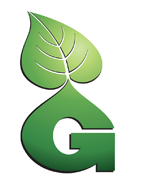Smaller Saves
Rethinking size in general is a good place to start. Can a smaller piece serve the same purpose and have as much impact as a larger piece? Large or odd-sized design pieces may not use paper efficiently and can result in substantial amounts of waste.
Digital Photography
The advent of digital cameras has drastically reduced waste output. Gone are the developing chemicals and the celluloid negatives. Paper is considerably reduced or eliminated entirely. However, not all digital photography is equal—care must be taken to ensure high resolution and quality.
Combine media
When direct marketing for either an event or product use both print and email for increased frequency of contact. Using both methods properly will improve response rates.
Web-to-print
Web-to-print digital workflows reduce the use of paper, ink, transportation costs, and production time. Savings are realized because of a unified workflow solution required to make this workflow operational. Cost reductions are reflected in a reduction in costs from both the client side and the printed piece.
Optimum press sheet use
Work closely with Castle Press early in the planning process. Parent sheets of paper typically come in several standard sizes. Designers can size their projects to make more efficient use of standard sheet sizes—printing two—, three—, or four-up (or more) to use less paper and to minimize the amount of waste.
Use FSC® certified papers
The presence of the Forest Stewardship Council® (FSC®) chain-of-custody trademark ensures that the materials used to produce the product or printed piece were sourced responsibly. Every entity that touches the product—from the logger to the printer—must be FSC® certified.
Digital Proofing and File Delivery
The electronic technology of the PDF (portable document format) can save not only resources but also time. Delivering art directly to the Castle Press via PDF and web server uploads eliminates wasted time and storage media. On-screen proofing, via PDF, eliminates time and paper waste.
Lithography (Offset Printing)
Castle Press uses alcohol-free substitutes that use glycol during the plate-making process, vegetable oil-based ink during the printing process, low-VOC, water-miscible solvent blanket washes during press cleanup and disposal of any waste ink or blanket wash through EPA-licensed, hazardous waste disposal companies.
Digital Printing
Toner-based digital printing is the least environmentally invasive. Because all graphic content is in electronic form from creation through printing, the chemicals associated with film processing and plate making are eliminated, as is make-ready waste. The toner is non toxic and biodegradable. The digital process is flexible, allowing for small-quantity, on-demand print runs that reduce inflated inventories and ultimately reduce stockpiles of obsolete printed materials.
Aqueous Coatings
Aqueous-based varnishes, a mix of polymers and water, emit fewer VOCs, do not require solvents for cleanup, and can be recycled and re-pulped. They are the most economical and environmentally friendly. As with inks, the less varnish that is applied to the sheet, the better for the environment.
Binding
Metal staples that are used in saddle stitching do not need to be removed for recycling. Staples are removed at the recycling pulp mill using magnets, screens and filters during the re-pulping process.
In order for perfect bound books to be recycled all adhesive residues must be removed from the paper fiber. Hotmelt, petroleum-based glues are hard to remove during de-inking.
Mailing
Keeping your mailing database up to date will keep your printing quantities more accurate, eliminating waste and the associated costs. This can be accomplished by encouraging clients to update their mailing information. Using the "Return Service Requested" notice on your mailing pieces will prompt the USPS to provide mailing address updates. Consumer lists can be run through National Change Of Address (NCOA) to update the mailing addresses of people who have moved. Castle Press will de-dupe your mailing list of duplicate names, then give back an updated house list to the client.
Print logos that indicate your Going Green efforts

Market the fact that your organization is making an effort to be part of the of the solution. It demonstrates your commitment and encourages others to get on board either because they do not want to be shown up by your efforts or because they see how easy it is to be part of the solution.
See also:
Going Green
Request a quote or consultation
Purchase printing, upload your PDF or design online